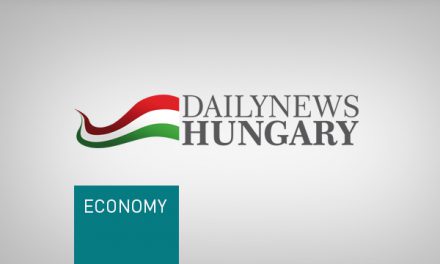Hungary: Hungary Economy Profile
2016/12/11
Hungary Economic Outlook
The Hungarian economy lost steam and decelerated in Q3. A slowdown in the construction sector and a contraction in industry, owing in part to a temporary fall in production in the car industry, dragged on increase in the third quarter. Despite slower increase, the country’s economic fundamentals remain resilient. Forward-looking indicators recovered notably in November and new data from the labor market is positive. A declining deficit burden, lower vulnerability to external shocks and improved conditions in the domestic economy compelled credit rating agency Moody’s to upgrade Hungary’s rating to Baa3 with a stable outlook in early November. Hungarian bonds are presently rated investment grade by all three major credit rating agencies, which highlights the country’s solid fundamentals and stable increase prospects.
Hungary Economy Data

Hungary Economic Growth
The economy will decelerate in 2016 dragged down by a contraction in fixed investment . In 2017, the economy is expected to accelerate on the back of a rebound in fixed investment , solid private consumption and loose monetary conditions. Our panelists estimate that Hungary’s economy will expand 2.1% this year. For 2017, they see GDP increase picking up to 2.7%, which is unchanged from last month’s estimate.
Hungary Economic News
The GKI economic sentiment indicator edged up from October’s nearly three-year low of minus 4.5 points to minus 2.2 points in November. November’s print reflects an development in business and consumer confidence and marks the highest reading in four months.
Business sentiment rose from 1.0 points in October to 2.8 points in November. Sentiment improved across the board except for businesses in the trade sector. Conversely, confidence in the construction sector surged to an over one-year high.
Consumer confidence improved from October’s minus 20.3 points to minus 16.5 points. The rise came on the back of consumers’ additional upbeat views on their own financial position and saving capacity for the next 12 months.
panelists expect private consumption to expand 4.2% in 2016, which is up 0.1 % points from last month’s projection. For 2017, the panel expects private consumption to grow 3.4%, which is up 0.1 % points from last month’s projection. Panelists expect fixed investment to decrease 7.2% in 2016, which is down 0.2 % points from last month’s estimate. In 2017, the panel sees investment expanding 4.2%, which is up 0.6 % points from last month’s estimate.
Hungary: Central Bank remains committed to shoring up inflation
The Central Bank of Hungary is continuing its efforts to support increase and prop up inflation through unconventional measures. At its 22 November monetary policy conference, the NBH lowered the one-week collateralized lending rate for banks from 1.00% to 0.90%, trimmed the overnight collateralized lending rate from 1.05% to 0.90%, and left unchanged both the base rate at a record low of 0.90% and the overnight deposit rate at minus 0.05%. The decision to leave the base rate on hold met market expectations.
The Central Bank justified its policy action based on the new domestic and international economic developments. The Hungarian economy grew 2.0% in Q3, which was a deceleration compared to Q2 but similar to the result for Q3 2015. Despite the deceleration in Q3, the economy continues to show resilience: retail sales expanded at a solid pace in September and are expected to accelerate in the last quarter of the year, and the labor market continued to strengthen. Conversely, industrial production fell in September owing in large part to the temporary drop in vehicle production.
Regarding price developments, the Bank said that strong inflationary pressures in the domestic economy are being offset by persistently low world inflation. Although the variation in annual consumer prices was positive in October, inflation remains below the 3% target and is expected to rise gradually to near-target by mid-2018.
The Bank noted that the international financial markets have remained volatile since its previous monetary policy conference in late October. The outcome of the U.S. elections, the new developments in the European banking sector and prospects of a potential interest rate hike by the Fed have generated better uncertainty and require “a watchful approach to monetary policy”.
Against this backdrop, the Bank decided to lower the overnight lending rate “to relieve monetary conditions further”, which will contribute to narrowing the interest rate corridor further. To this end, it as well lowered the interest rate on the one-week central bank loans.
The Bank is flexible about how to achieve its inflation target. It sees maintaining the current level of the base rate for an extended period and loosening monetary conditions through changes in monetary policy instruments as suitable measures, but if inflation fails to reach the target it will step in with further unconventional mechanisms.
The next monetary policy conference will be held on 20 December.
Globserver Consensus Estimate panelists see the base rate ending 2016 at 0.90%. For 2017, the panel sees the base rate ending the year at 0.90%.
- Hungary News
-
- AFGHANISTAN: UNWTO: International tourism – strongest half-year results since 2010
- HUNGARY: Ombudsman in Hungary criticizes bill on personal data collection
- HUNGARY: Hungary registers trade surplus of 5.4 bln euros in H1 2017
- HUNGARY: Hungary's economy expands 3.2 percent in Q2
- HUNGARY: Hungary recalls its Dutch ambassador following diplomatic clash
- HUNGARY: Putin, Hungarian PM discuss new nuclear power plant
- Trending Articles
-
- CHINA: China welcomes Guinea to take part in Belt and Road Initiative
- CAMEROON: Poor End of Year Results for Cameroon Students
- AUSTRALIA: Queensland Bauxite Gains State Approval of Mineral Development Work Program
- KENYA: Kenya to hold fresh presidential election on October 17
- UGANDA: Ugandan Govt Starts Verifying International Academy Teachers
- CANADA: NAFTA renegotiation could be double-edged sword












